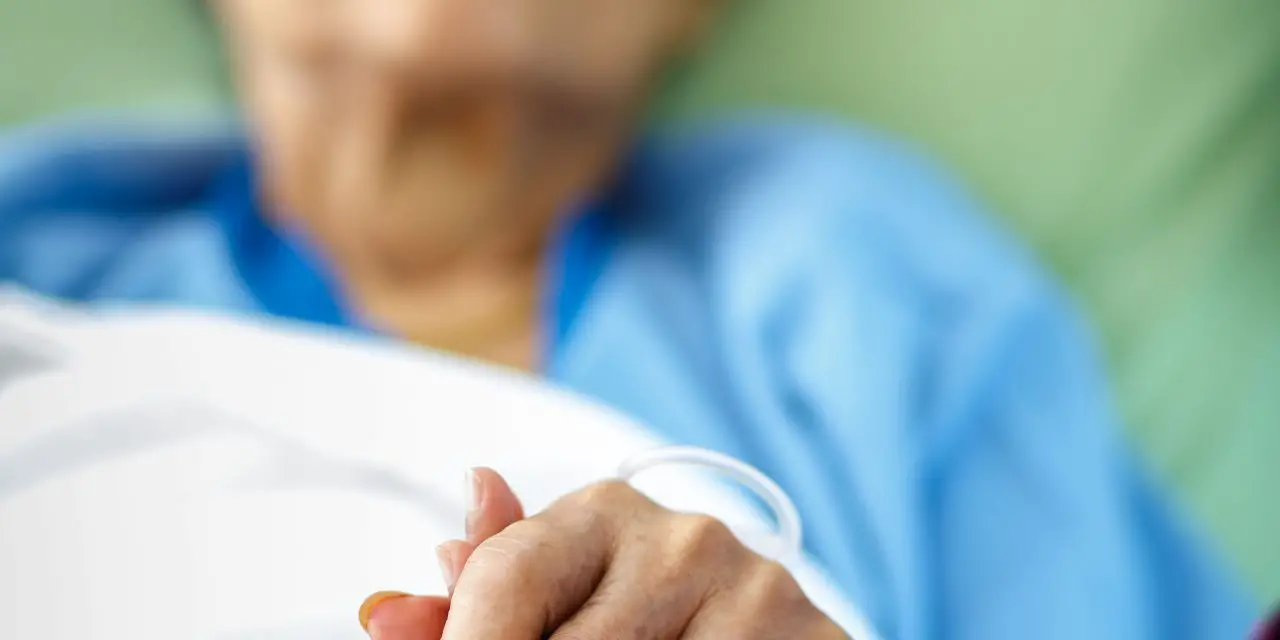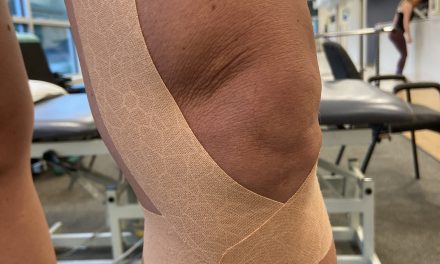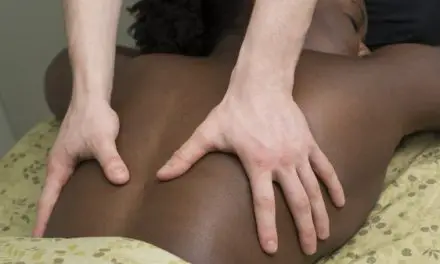People with cancer or a history of having cancer treatments may get turned away from getting a massage or other spa treatments. Oftentimes these stories may not get media attention, and it may not get reported.
In 2015, journalist Joanna Moorhead, who was diagnosed with cancer, wrote her experience in The Guardian about the vulnerability she felt when she filled out a questionnaire that asked about her health history.
“Because spas, on the whole, are scared of people like me,” she wrote. “Most do not have therapists trained specifically in how to treat them, and the default position in most spas is to refuse many treatments — massage especially.”
In 2021, Spruce Hill Resort & Spa in British Columbia was ordered to pay a woman $16,536 in damages after the staff refused to give her a massage in 2017 because she had a history of cancer. The spa’s general manager refused service because it could cause the cancer to spread throughout their body.
Massage therapy education, in general, does not have a strong foundation in understanding how cancer works. In fact, a sample survey of 293 massage therapists at the 2010 Meeting of the American Massage Therapy Association found that:
- 60% of them received skin cancer education during their training
- 25% received skin cancer education after completion of their massage training
- 16% stated they received skin cancer education both during their training and after completion of their training
No additional surveys were found or conducted since this one, and the focus is on skin cancer.
Does massage spread cancer?
There is no evidence that massage can spread cancer cells to other parts of your body, yet many massage therapists and spa workers believe this—as noted earlier in the 2021 litigation. The only evidence that massage could promote metastasis is with extreme focused pressure at the armpit, such as during a demonstration of sentinel lymph node biopsy and mapping, which is a procedure to see if cancer cells had spread.
This goes along with the myth that massage can increase blood circulation and remove lactic acid from muscles.
How does cancer start?
Cancer starts when cells in your body begin to grow uncontrollably. Normally, our cells grow, divide, and die in a very regulated manner. However, sometimes something goes wrong in this process, causing cells to grow out of control and form a mass called a tumor.
Cancer can start in different ways, but one common factor is changes or mutations in the cells’ DNA. When certain genes in the DNA get mutated, it can disrupt the normal cell cycle, leading to uncontrolled growth. Several factors contribute to such mutations:
- Genetic factors: Sometimes people inherit certain genetic mutations from their parents that increase their risk of developing cancer. These mutations can be passed down through generations.
- Environmental factors: Our environment plays a big role too. Things like exposure to harmful chemicals, radiation (e.g. ultraviolet rays from the sun), and pollutants from buildings and homes, such as high exposure to asbestos, arsenic, and benzene, can damage DNA and increase the risk of cancer.
- Lifestyle choices: Smoking, poor diet, lack of exercise, and excessive sun exposure are all examples of lifestyle factors that can increase the risk.
- Viral infections: In some cases, viruses can cause cancer. For example, certain strains of the human papillomavirus (HPV) can lead to cervical cancer, and the hepatitis C virus can cause liver cancer.
Can benign tumors turn malignant and spread?
Benign tumors pose little risk because they are localized and small. These bundles of cells are held together by the surface tension of the cells’ molecules—similar to how two small wet pieces of paper stick together—which are separated by a fibrous capsule.
Since they are localized to local healthy tissues, surgeons can easily identify them and remove them. However, benign tumors can be a big problem if they are large enough to interfere with our daily activities, affect our social lives (e.g. huge wart on nose or forehead), or secrete too much biologically active substances like hormones.
Cancer development is a complex process that involves both evolution and interactions within the body, according to Boutry et al. Cancer cells change over time due to factors like genetic mutations and their surroundings. The traditional view suggests that cancer starts from normal cells and gradually becomes malignant due to genetic changes.
For cancer to grow and spread, it needs specific conditions in its environment. “Apart from a few examples of transmissible malignant cells that evolved into parasitic entities, the vast majority of cancer cells are an evolutionary dead-end,” Boutry et al. wrote.
Among normal cells, benign tumors maintain their territories by a physical membrane called the basal lamina, which underlies layers of epithelial cells and distinguishes the surfaces of external and internal epithelia and the structure of blood vessels. Under typical massage treatments, such as Swedish massage, it is unlikely to break off and spread.
In fact, chemical processes of cancer cells are the biggest driving factors in whether they metastasize or not. Malignant cells produce excessive cell-surface receptors for the proteins and polysaccharides (complex carbohydrate chains) that make up the basal laminae, such as collagens and proteoglycans. The proteins of the laminae get digested by a type of hormone secreted by most tumor cells called plasminogen activator, which chops the peptide bond of the laminae and weakens its strength. This allows tumor cells to eventually release themselves from their cage and enter the bloodstream.
Not all tumor cells will survive the trip in the bloodstream; less than 0.01% of tumor cells forming a second breeding site.
Related story: [If Cancer Feeds on Lactate, Wouldn’t More Athletes Get Cancer?]
What does research say about massage and cancer?
Research in massage and cancer in the past 20-plus years find that massage is effective in alleviating symptoms of cancer, such as pain and nausea, in the short term.
While two systematic reviews show such positive effects, the researcher reported that the results are mixed because of the lack of consistency of the research methods and the definition of “massage,” small sample sizes, bias in reporting and sampling, variations in duration, type, and frequency of treatment, and favoring positive outcomes (publication bias).
For example, a 2008 systematic review found 10 randomized-controlled trials had mixed results in improvements in anxiety, depression, and other psychological symptoms. This means some trials had significant improvements while some had reported no change.
Another systematic review published in 2016 found massage therapy to have some effectiveness for alleviating pain among cancer patients, despite the evidence quality being weak and mixed. Out of three studies that compared massage therapy with no treatment for cancer-related pain, one study found a large effect from massage therapy, one produced a much smaller effect, and one had no effect.
“As such, massage therapy appears safe; however, more data is needed to fully understand safety. Given the small size and apparent heterogeneity and inconsistency across the pooled studies, no recommendation was made for massage compared to no treatment for reducing pain intensity/severity for cancer patients,” the authors reported.
A 2021 systematic review of seven studies found that massage therapy could be effective in alleviating cancer-related fatigue. However, the authors reported that future research should have bigger sample sizes, identify which types of massage would work best and its duration.
A 2023 meta-analysis of 11 studies with a total of 789 patients with breast cancer and cancer-related fatigue also found similar effectiveness. The researchers compared two different types of massage—tui na and reflexology—with no treatment. Treatments lasted between 20–40 minutes and were conducted twice a week for 3–5 weeks.
“Current evidence suggests that reflexology is the most effective approach to relieve fatigue, particularly in the breast cancer patients,” the authors reported.
Larger studies with almost 700 patients were recently conducted by two U.S. hospitals found that 93% of the patients who received massage therapy from a family member or significant other (who were given massage instructions from a DVD) were satisfied with the massage. The patients self-reported a larger reduction in nausea, pain, anxiety, and fatigue than a control group who did not receive massage but were read to instead.
What massage benefits are there for cancer patients?
Although the evidence for massage therapy’s effectiveness for pain and other cancer symptoms is weak due to many study design and reporting problems, there’s very little evidence why cancer patients should not receive massage therapy.
While there isn’t much difference in techniques between oncology massage and a typical Swedish massage, therapists and patients must understand the biology behind cancer and psychosocial issues that cancer patients endure. This understanding drives how the treatment is done and how to communicate with clients and patients.
While some therapists may think that massage itself has a high effect on how cancer patients feel, some research reveals that patients’ expectations, attitude, and relationship with the therapist, and how confident therapists are with their work and what they say, can also affect the patients’ outcome—not just the techniques.
In other words, if the patients know, like, and trust the therapist, then they are more likely to perceive massage therapy as highly beneficial to help them alleviate symptoms, almost regardless of the type of massage. Thus, massage therapists should be proficient in communicating with patients, other healthcare professionals, and the patients’ family and friends, not just the hands-on work itself.
Choosing the right oncology massage therapist
Look for massage therapists who have specialized training or certifications in oncology massage. These credentials indicate that the therapist has received specific education and training in addressing the unique needs and considerations of cancer patients.
Verify the therapist’s qualifications, including their licensure, certifications, and professional affiliations. Make sure that they are licensed to practice massage therapy in their state or country.
Aside from paper credentials, ask them if they have work experience in palliative care or in a clinical environment with cancer patients. And lastly, ask yourself if you are comfortable and feel safe working with the therapist.
You can search for an oncology massage therapist from the Society for Oncology Massage.
“When you’ve got cancer you tend to spend much of your time stripping off and lying on a bed for some medical reason, so doing the same thing at a spa felt to me like claiming my body back, and learning to enjoy it again rather than fear it, as I had over the previous few months,” Moorhead wrote.
A native of San Diego for nearly 40 years, Nick Ng is an editor of Massage & Fitness Magazine, an online publication for manual therapists and the public who want to explore the science behind touch, pain, and exercise, and how to apply that in their hands-on practice or daily lives.
An alumni from San Diego State University with a B.A. in Graphic Communications, Nick also completed his massage therapy training at International Professional School of Bodywork in San Diego in 2014.
When he is not writing or reading, you would likely find him weightlifting at the gym, salsa dancing, or exploring new areas to walk and eat around Southern California.






